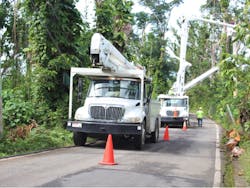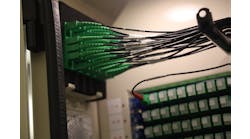In the third article of this special report series brought to you by Microgrid Knowledge and Think Microgrid, we explore why fixing the grid alone will not ensure electric reliability or energy equity.
While there is little doubt that the grid needs to be improved, it is clear that an exclusive large-scale, centralized approach is no longer viable. Work at this scale is expensive, slow and difficult to complete. Even with significant improvements, the centralized grid will remain vulnerable and brittle. We cannot achieve resiliency without investing in local distribution systems, the cause of most of the power disruptions that consumers experience. Placing distribution wires underground would be helpful, but the high cost of that solution makes microgrids an even more obvious choice.
The US needs to focus on building a grid that is flexible enough to incorporate more distributed solutions that help avoid construction of wires, poles and power plants by localizing and better managing energy. — Think Microgrid, “Microgrids: An Immediate Climate Solution“
In its report, “How Are We Going to Build All That Clean Energy Infrastructure?”, the Niskanen Center points out the difficulty of improving the large-scale grid. Little of the interstate bulk-power transmission planned for 2010 in the western US was built. That same report states that the US would need to expand the amount of land it uses for power generation by a factor of 13 to achieve a net-zero carbon goal by midcentury. Wind and solar alone would require a land mass equal to Connecticut, Illinois, Indiana, Kentucky, Massachusetts, Ohio, Rhode Island and Tennessee combined. In other words, we can’t even depend on large, centralized renewable energy projects. We must incorporate decentralized, strategically located renewables. The US needs to focus on building a grid that is flexible enough to incorporate more distributed solutions that help avoid construction of wires, poles and power plants by localizing and better managing energy.
The grid is, by design, a centralized, one-way system. Moreover, the grid’s problems are inherent, at least in part, in its very design. Electricity travels long distances from central power plants over transmission and distribution lines to population centers. This approach succeeded in extending power to the farthest reaches of the United States. But, today, we need a grid — and accompanying rules and regulations — that support a dynamic, two-way flow of power. To achieve this 21st century grid, policy and regulations must encourage the use of intelligent, flexible distributed energy.
The 21st century electric grid must solve other problems created by the 20th century grid:
Cascading failures: The wires and poles that make up the 20th century centralized grid are vulnerable to disruptions, and because the grid is interconnected, a disruption in one location can have widespread ramifications. A tree coming in contact with a power line on Aug. 14, 2003, in Ohio triggered a chain of events that knocked out power to 50 million people throughout the northeastern United States and parts of Canada. In a world now deeply reliant on electricity — and likely to be more so as the transportation system electrifies — such outages are untenable. Moreover, it is no longer storms, fires and accidents alone that make the grid vulnerable to widespread failure. The grid is a constant target of cybercriminals. In a June 6, 2021, interview with CNN, Energy Secretary Jennifer Granholm stated that attempted cyberattacks on the grid are “happening all the time.”
In a world now deeply reliant on electricity — and likely to be more so as the transportation system electrifies — outages are untenable. Moreover, it is no longer storms, fires and accidents alone that make the grid vulnerable to widespread failure. The grid is a constant target of cybercriminals. — Think Microgrid, “Microgrids: An Immediate Climate Solution“
Inefficiency: Electricity dissipates when it travels over wires, a phenomenon known as electric line loss. By some estimates as much as 5% to 15% of the electricity generated by a power plant disappears by the time it reaches the consumer. Society pays the price for this inefficiency in higher energy costs and environmental harm. Line loss adds to carbon and other emissions with no justification — the energy is never even used. Given that 60% of electricity in the United States is derived from fossil fuels, reducing this phantom energy could take a meaningful bite out of the nation’s emissions count.
Inequality: The grid’s inefficiency, along with its lack of resilience and flexibility, creates another problem: energy inequality. The energy burden of low-income households is three times that of others, according to the US Department of Energy. An energy burden is considered high if it is over 6% of household income. For households with incomes below 150% of the federal poverty level, the energy burden is particularly onerous. They spend 12% of their income on electricity — double the amount considered affordable.
Inequity isn’t only monetary. Disadvantaged communities also face a higher environmental burden. Too often, coal-fired power plants are sited within low-income and minority urban neighborhoods. While these plants may bring jobs and tax revenue to these communities, they also leave residents with abnormally high levels of asthma and other respiratory ailments. Low-income communities also face more health risks from air pollutants produced by diesel backup generators — a technology that microgrids can readily displace. (In 2012 comments to the Environmental Protection Agency, the American Lung Association noted that backup generators tend to be clustered in urban areas where minority and low-income populations live.)
Replacing coal plants with clean energy generation may solve this health problem, but it also risks economic damage to communities because the new wind and solar farms replacing coal require acres of open space, which are typically found in rural areas far from urban communities.
As we are beginning to learn, climate disasters like hurricanes and floods often impact disadvantaged communities disproportionately because these communities are more likely to be located in areas that are susceptible to weather shocks, according to the Brookings Institute. For example, low-income neighborhoods in Houston experienced greater damage from Hurricane Harvey because they tended to be clustered in flood prone areas. In addition, only 17% of homeowners in the eight counties most severely affected by Harvey had flood insurance policies. And when a disaster strikes, members of these communities may lack the resources to evacuate or stay in hotels.
Climate disasters like hurricanes and floods often impact disadvantaged communities disproportionately because these communities are more likely to be located in areas that are susceptible to weather shocks. And when a disaster strikes, members of these communities may lack the resources to evacuate or stay in hotels. — Think Microgrid, “Microgrids: An Immediate Climate Solution“
The repercussions of a climate disaster can affect poorer families for years. A decade after Hurricane Katrina, those whose homes were flooded had lower credit scores and lower rates of home ownership than those less affected. Further, county-level poverty tends to rise after very large disasters (those responsible for at least 100 deaths). Housing prices also decline. Wealthier households tend to relocate from these areas and poor families migrate in, according to Brookings.
Microgrids cannot single-handedly eliminate energy inequality nor can they ameliorate all of the consequences of extreme weather, but they have an important role to play in any policy decisions that aim to solve these issues. Microgrids and distributed generation of the 21st century grid are one answer to an important question: How can we ensure that build back better also means build back fairer?
Regulatory decisions from the last century and resulting private and public investments helped us build a grid that provided universal access to every business and home in the United States. But it is time to rethink those policies. The changes we need to make cannot wait decades. In so many ways, energy regulators hold the keys to these solutions. Interconnection policies need to be updated. Archaic or anticompetitive tariffs are thwarting new microgrid investment. We have an opportunity now to create new policies that allow open access to the distribution system, policies that are agnostic to technology, but that reward flexibility and resilience.
Archaic or anticompetitive tariffs are thwarting new microgrid investment. We have an opportunity now to create new policies that allow open access to the distribution system, policies that are agnostic to technology, but that reward flexibility and resilience. — Think Microgrid, “Microgrids: An Immediate Climate Solution“
We are building the plane while flying it, as the expression goes. The effects of climate change are already upon us. One in 10 Americans live in communities that are experiencing record high temperatures. More than 3,100 counties have breached the 2-degree Celsius warming limit, a critical threshold. Record heat and cold, and intensifying storms and wildfires are disrupting our energy system and causing fuel shortages and power outages. The time has arrived to transition our carbon-intensive energy system to low- and no-carbon alternatives.
So, what can we build now to address the threats outlined here? How do we manage the energy transition while maintaining safety and security? How do we restructure our infrastructure so that urban communities can breathe clean air and share in the prosperity of today’s clean energy revolution?
In the coming weeks, this special report series will explore the following topics:
- Microgrids for a 21st Century Grid.
- How to Capture the Full Benefits of Microgrids in Climate Change Strategies and Infrastructure Plans.
Read the full vision paper, courtesy of Think Microgrid, to learn more. If you feel that microgrids need a unified voice in regulatory and policy discussion, please join Think Microgrid. Learn more about becoming a member of Think Microgrid.








